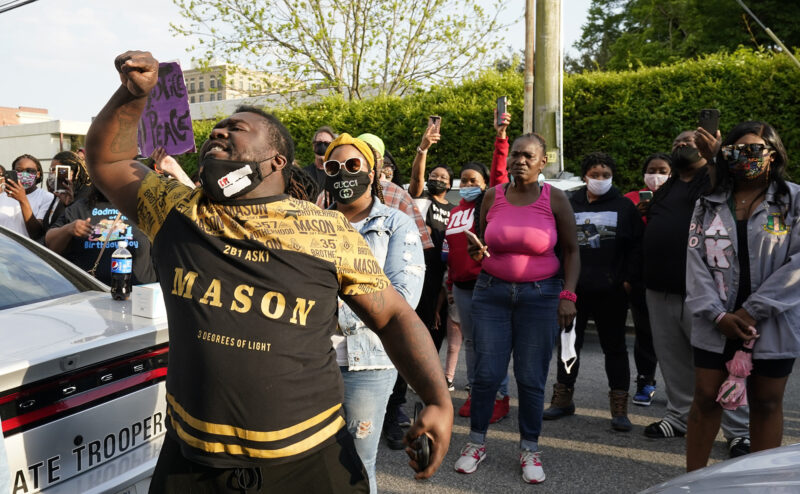When a Black man was shot and killed by deputies, a multiformat team raced to the city in rural eastern North Carolina and deftly led throughout news cycles by staying ahead on spot developments while telling the story of the man’s life. The fast response was key as authorities released few details.
Hours after Andrew Brown Jr. was killed by deputies serving a warrant, Raleigh reporter Gary Robertson was on the ground in Elizabeth City gathering a key eyewitness account and protester reaction, while his Richmond, Virginia-based colleague Denise Lavoie’s interviews with Brown’s grandmother and aunt were among the first family reaction. Meanwhile, Charlotte reporter Skip Foreman, who has extensively covered racial justice cases, listened to an emergency city council meeting and summarized the most poignant details. Raleigh photographer Gerry Broome’s photos put readers on the ground, and multiformat journalist Allen Breed also provided family and witness interviews, all that first night.

Glenda Brown Thomas displays a photo of her nephew, Andrew Brown Jr., on her smartphone at home in Elizabeth City, N.C., April 22, 2021. Brown was shot and killed the previous day by a sheriff’s deputy, who was attempting to execute a warrant.
AP Photo / Allen G. Breed
The following day, Maryland-based reporter Michael Kunzelman, conducting interviews by phone, and Breed, interviewing family in person, delivered a sensitive account that captured the complexity of Brown’s life, including family describing him as a proud father with a beaming smile. That story, along with the first day story, captured front pages around North Carolina and beyond. Even the Norfolk newspaper, the closest large outlet to the scene, teased AP’s profile on their front page, and major outlets such as The New York Times and The Washington Post ran AP’s articles in their entirety, while others, including USA Today, WRAL-TV and The (Raleigh) News & Observer credited AP’s reporting.
In subsequent cycles, AP also led on details including clear reporting on how many deputies were on leave, how North Carolina’s body camera law works and the release of arrest and search warrants, drawing credit from other news outlets.
The FBI has since launched a civil rights probe into Brown’s killing.
